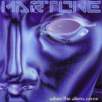Hello readers. Dave Martone here ready to chew on your ears on the topic of double tracking. Let's think for a moment - who were some great double trackers? Mmmm... what do you think of Randy Rhodes, James Hetfield, Dimebag Darryl, Yngwie Malmsteen, John Petrucci, etc.?
These dudes are capable of awesome double tracking. First off I should explain what the hell I am talking about. Double tracking (DT) is the ability to double a rhythm or lead part that you just played on a totally separate track. This might sound easy to you that have not tried it, but I dare you to! Double tracking really tests your memory and your precision. The reason being is that, first off, there are two different schools of doubling. There is the way that the Rolling Stones would double. It would be not necessarily a double, but almost a whole new part. This gives a very loose, jammy type of sound. The other is the tight, exacting, precision double. This way you have to copy everything that you just did, EVERYTHING! This is the only way to get the effect.
A great way to start is to record a rhythm track on your system over a groove. Pay careful attention to what you are playing as you are recording. After the take is done, pan the track to the hard left. You now are ready to do the double. You should pan your input signal now ready to be recorded hard right. Now, press record and hang on! As the track is going, you have to listen to three things at once to get a successful double. First, you have to be confident in yourself that you know the same part that you just played. Second is listening to the groove of the track. This will help you get on the bus (Being able to groove). The third is to listen to your double as you are recording for all timing inflections. The worst is doing a heavy rhythm section and having the riff flam. Ask your drummer what a flam is and that is how your riffs will sound if you are not careful.
When doing a professional double, people will use an entire different rig for the double. New guitar, new amp, hell even a new cable to get the sound different that the original track. I know that Dimebag used to track one track with a Marshall and the other with a Randall. One was a tube and the other a solid-state head. This in itself is going to give you great tonal differences. If you use the same sound, it will not be a bad thing, but you will be missing on the creation of a whole new, warped together sound. This is one way you can create your custom sound.
Harmony leads are very cool to do also. Syncing your vibrato or bends up with the first track is very challenging. Listen to Yngwie Malmsteen's "Rising Force" album. He is a master at syncing harmonies with wide vibrato bends. A great way to practice this is to record a lick or line with some vibrato and bends in it over a groove. Then harmonize it and copy your exact bending and vibrato either a third or sixth away. A trick is to play your vibrato in time with the track, whether it's a 16th, triplet 8th, 8th, etc. This way when you go to double it you will have no problem. With harmony leads the panning should not be so drastic. More around 11 and 2 in the audio spectrum. (I am referring to a clock, and where the two tracks would be placed in the spectrum).
Good luck doubling yourself to death!
May the tone be with you.
David Martone is a guitarist from Vancouver, Canada who has released seven solo CDs which showcase his musical diversity and brilliant guitarmanship.
His 2007 CD is entitled "When The Aliens Come", which features a progressive sound incorporating jazz, rock, fusion and metal influences.
